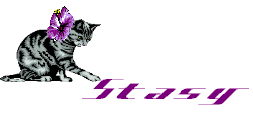


BERLIN HERITAGE: Land of the Rising Sun (CD on Spheric Music)
This CD from 2012 features 70 minutes of pleasant electronic music.
Berlin Heritage is Robert Sigmuntowski.
Atmospherics and additional electronic threads generate soundscapes of compelling beauty.
The electronics are an intriguing blend of crisp and dreamy. Textural threads are achieved through endless sustains of chords, which in turn are layered to achieve a lush atmosphere. Keyboard riffs emerge to entwine into undulating patterns that snake their way through the celestial environment. Some of these riffs are quite crystalline, sparkling like trails of pulsation jewels immersed in the flow.
The tuneage is full of flowing sequences radiating a stately mien with their fluid melodics. And yet these cosmic pieces also possess a soothing influence, engulfing the listener in a zone of reverent gentility.
The first track is almost 35 minutes long, allowing the aforementioned textural flows to nicely evolve in conjunction with gentle melodies shimmering with regal qualities.
No percussion is featured.
Keeping with the band's name, these compositions are a delightful example of Berlin School electronic music. Harmonic passages steeped in airy tones are seasoned by melodic material that exudes a heavenly grandeur. The listener is swept away on an ethereal tide and finds themselves surrounded by a ballet of engaging drones. It's a delightful excursion.

CRAIG PADILLA: The Heart of the Soul (CD on Spotted Peccary)
This release from 2012 features 71 minutes of romantic electronic music.
Supple tunes crafted with diverse electronics.
A sprightly delicacy marks these electronics. Their resonance displays a sweet personality; even the deeper notes possess an inherent charm. Fluid textures seep through the mix, bestowing a warmth on the music.
Piano plays a vital role in many of these tunes, contributing an organic presence, a voice for the romantic heart to express itself. These passages convey n amiable temperament, one that balances the sporty electronics with a touch of earnest romanticism.
Keyboards guide much of the electronics, defining crisp chords that twinkle with resolute optimism. These sanguine riffs shine with a gracious luster, as each subsequent layer adds to the musicŐs appeal.
Percussion is rare here, occurring in only one track. Another track features rhythms, but these are achieved through the cyclic application of non-impact electronics.
These compositions exalt human affection with their pleasant melodies. The blend of electronics and piano serves to glorify that sentiment, the modern mixing so blithely with the traditional. Nimble chords exist in conjunction with sweeping tones of a tender nature. These melodies will delve past the listenerŐs ears, easily rousing congenial emotions in the heart.

DAN POUND: Return to Other Worlds (double CD on PoundSounds)
This release from 2012 features 139 minutes of tribal/spacey electronic music.
More than just a retrospective compilation, this release remasters material from a selection of PoundŐs early releases (Other Worlds, Return, In a HummingbirdŐs Dream, Horizon, Hearts Core, and Door Beyond Time) from 2004 through 2005, presenting the music in a new mode. Pound plays: lots of tribal rhythms, an arsenal of analog and digital synths, guitars, shamanic and overtone voice, ethnic percussion, Native American flutes, and didgeridoo. The music belongs to several genres: ambient, tribal-ethnic, and shamanic space music.
The electronics are (understandably) diverse. Texturals establish airy foundations, upon which more pronounced electronics generate undulating melodies. While keyboards are employed, a percentage of the electronics manifest as sidereal effects or auxiliary pulsations. Pound tends to blend bloops with dreamy oscillations, keeping the flow fresh and entertaining.
The percussives are equally variegated. Tribal rhythms and ethnic beats proliferate the music, while other tracks see the use of more conventional tempos. The cyclic application of non-impact electronics also contribute rhythms. Consequently, some tracks feature languid tempos of a remote nature, while others host snappier tempos of a more modern mode. Either way, the result is tasty.
The flutes lend eerie resonance with their breathy issue, just as the didgeridoo provides even more haunted airs with its unearthly drones.
The guitars are well hidden amid the flow, and often disguised as stranger electronic stylings.
The vocals (of a non-lyrical nature) lend the music an organic mien with their spectral moans drifting amid the atmospheric electronics.
As expected with a collection of music spanning several years, this release cannot be given a single description. The tribal pieces evoke an antediluvian attitude with plodding tempos and atmospheric textures wafting overhead. The ambient tracks concentrate on harmonic auralscapes, ethereal passages designed to promote introspection. The spacier songs convey the listener to a realm of bouncier tuneage wherein the electronics surge with celestial puissance. Difficult if one is looking to unify the music into a sole classification, but then PoundŐs creativity has never allowed itself to remain stagnant, frequently mixing and flickering between diverse genres. There is, however, a common aspect to his music: a sense of mesmerizing wonder, a tendency to communicate the existence of unknown mysteries. This sense of wonder is quite vivid and entirely rewarding.
On one hand: this release provides listeners with an excellent introduction to PoundŐs music. On another hand: fans will applaud the opportunity to hear songs from his early (long out-of-print) albums. No matter which way you want to view it, this release is worthwhile investigatingÉand enjoying.

| Entire page © 2012 Matt Howarth. All rights reserved. |
Webpage design by
 |